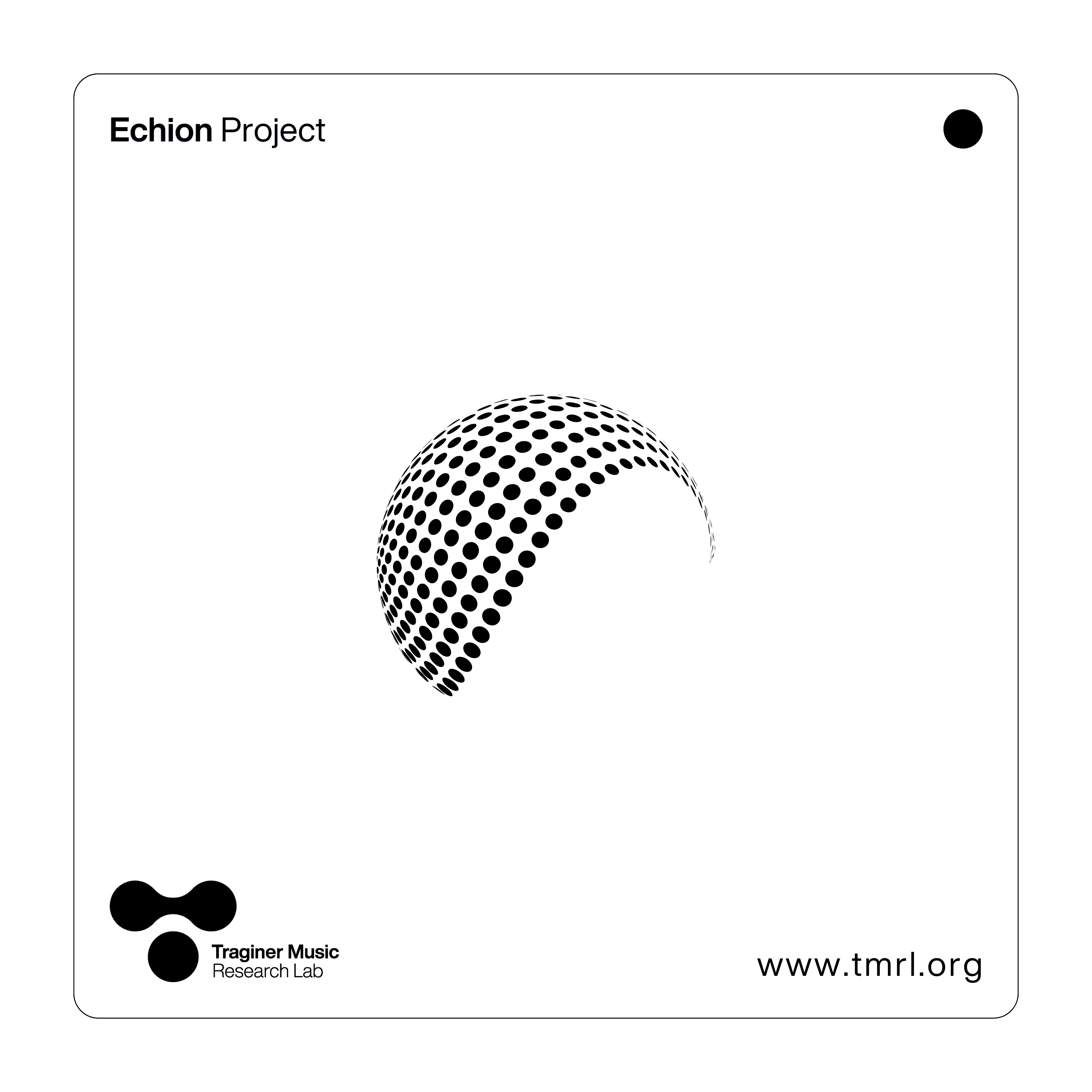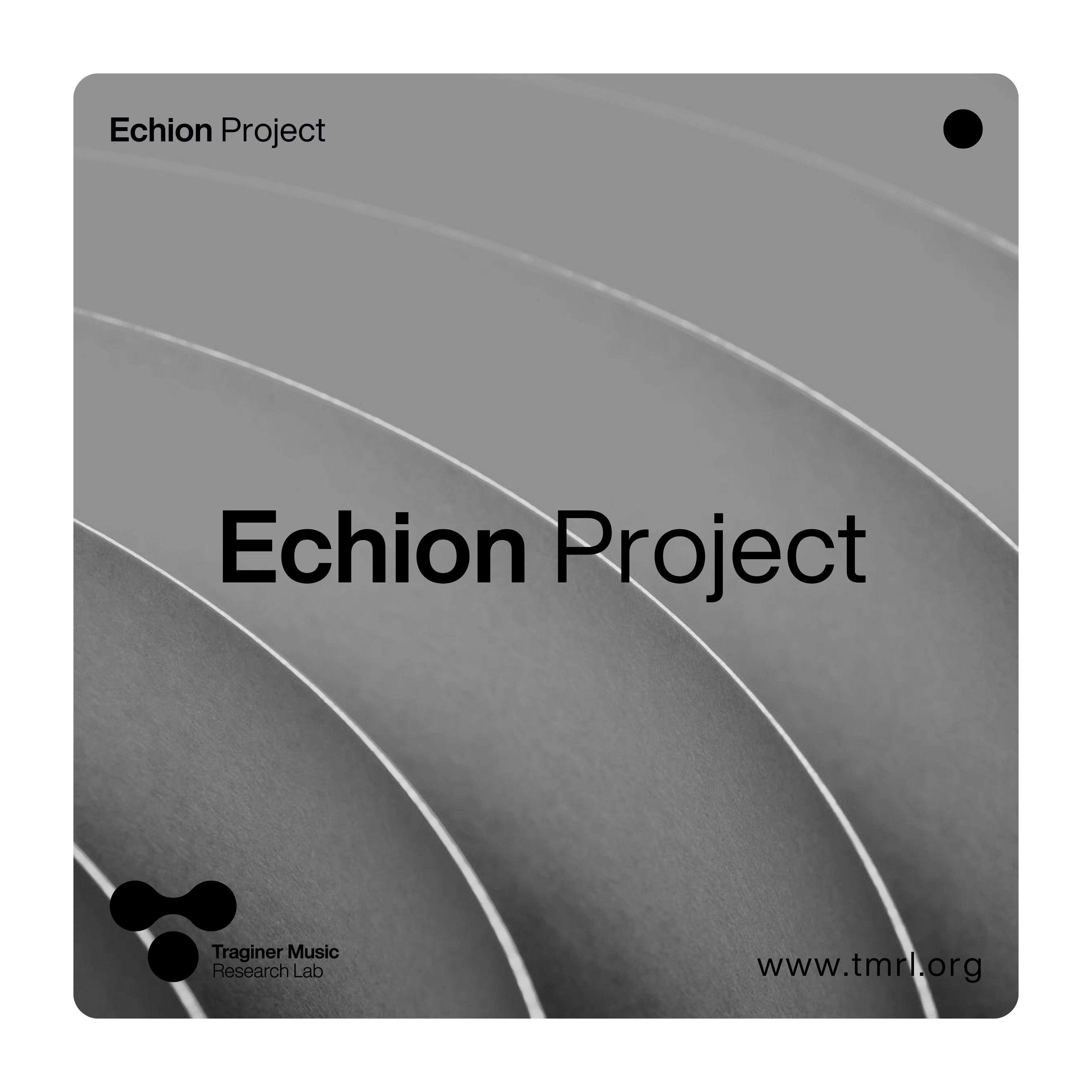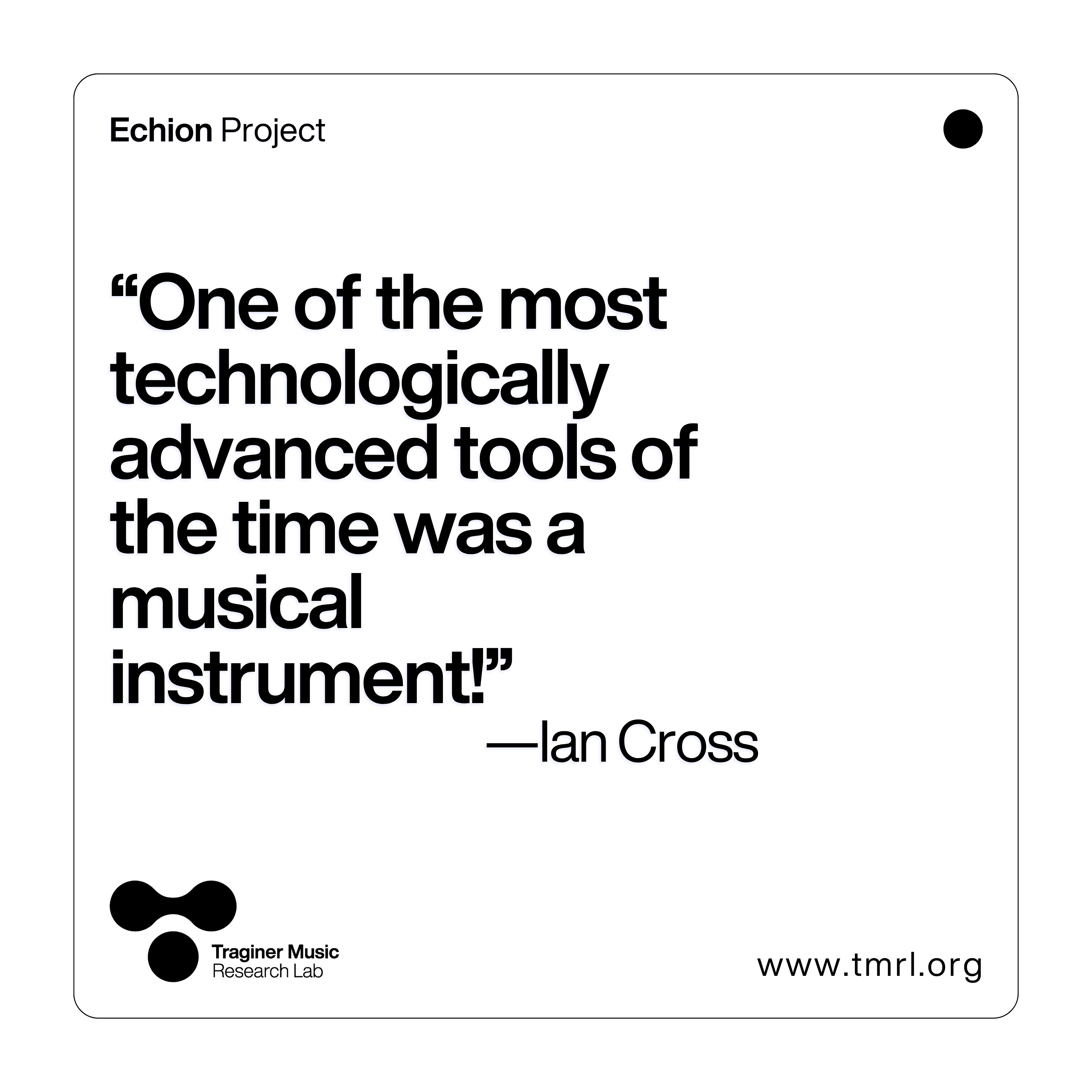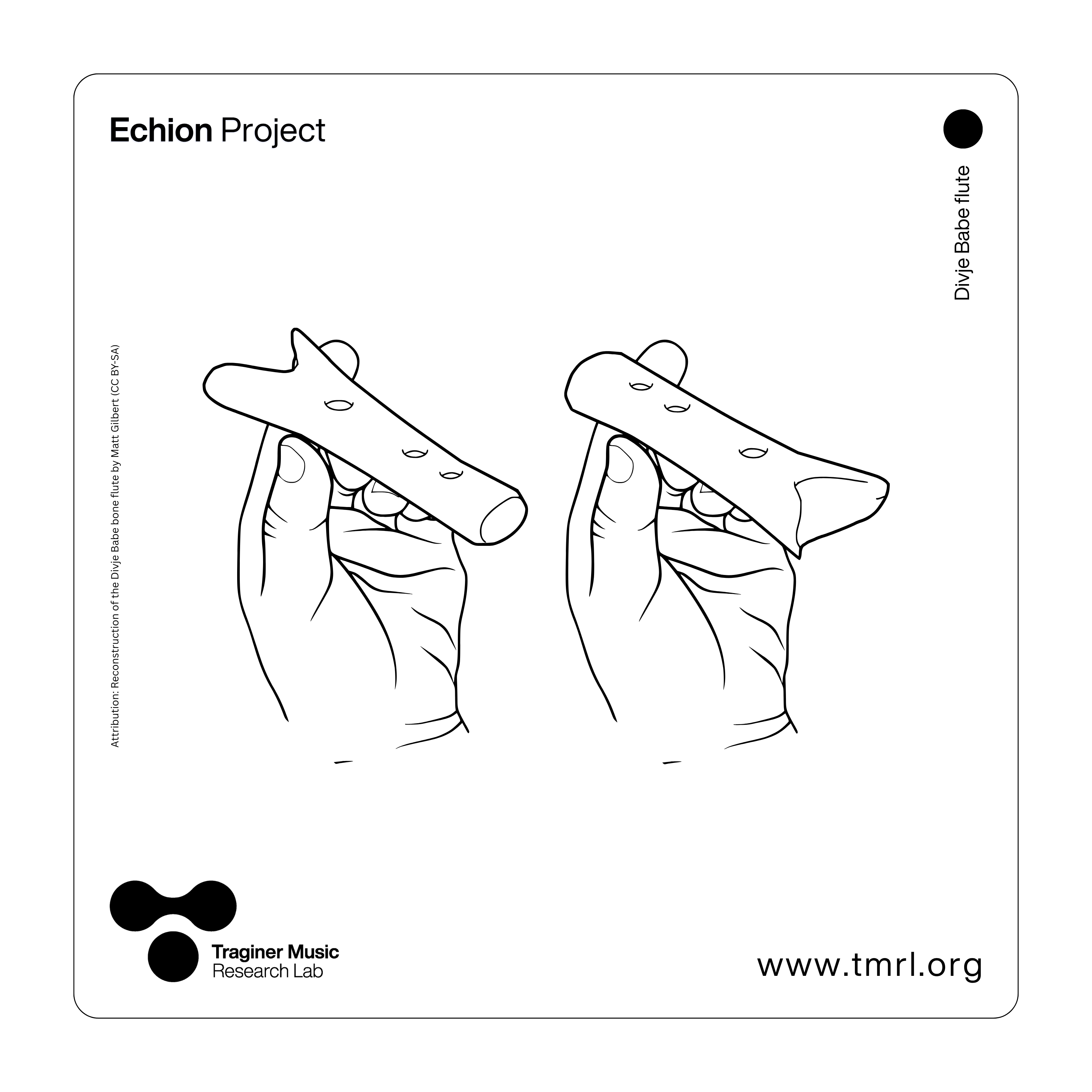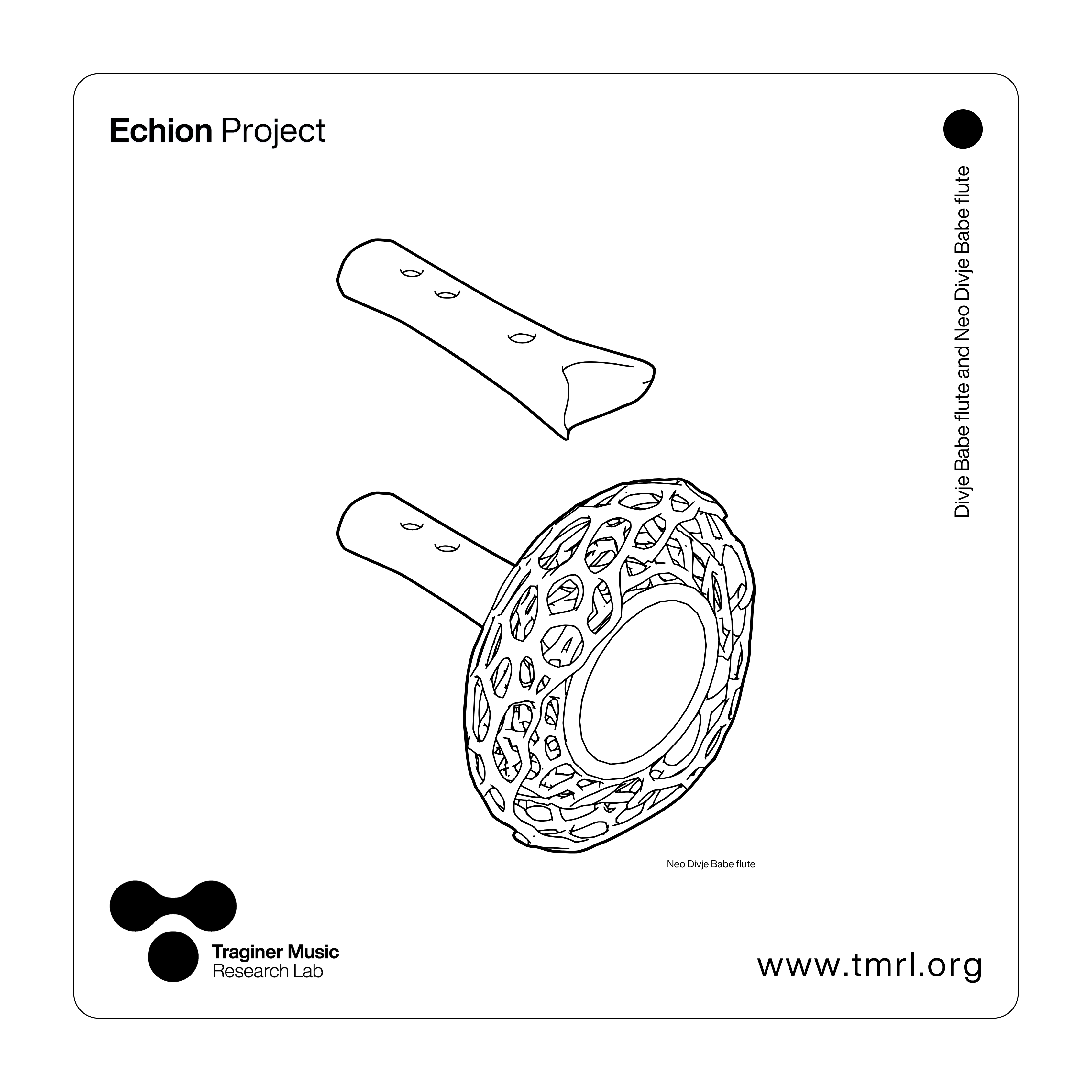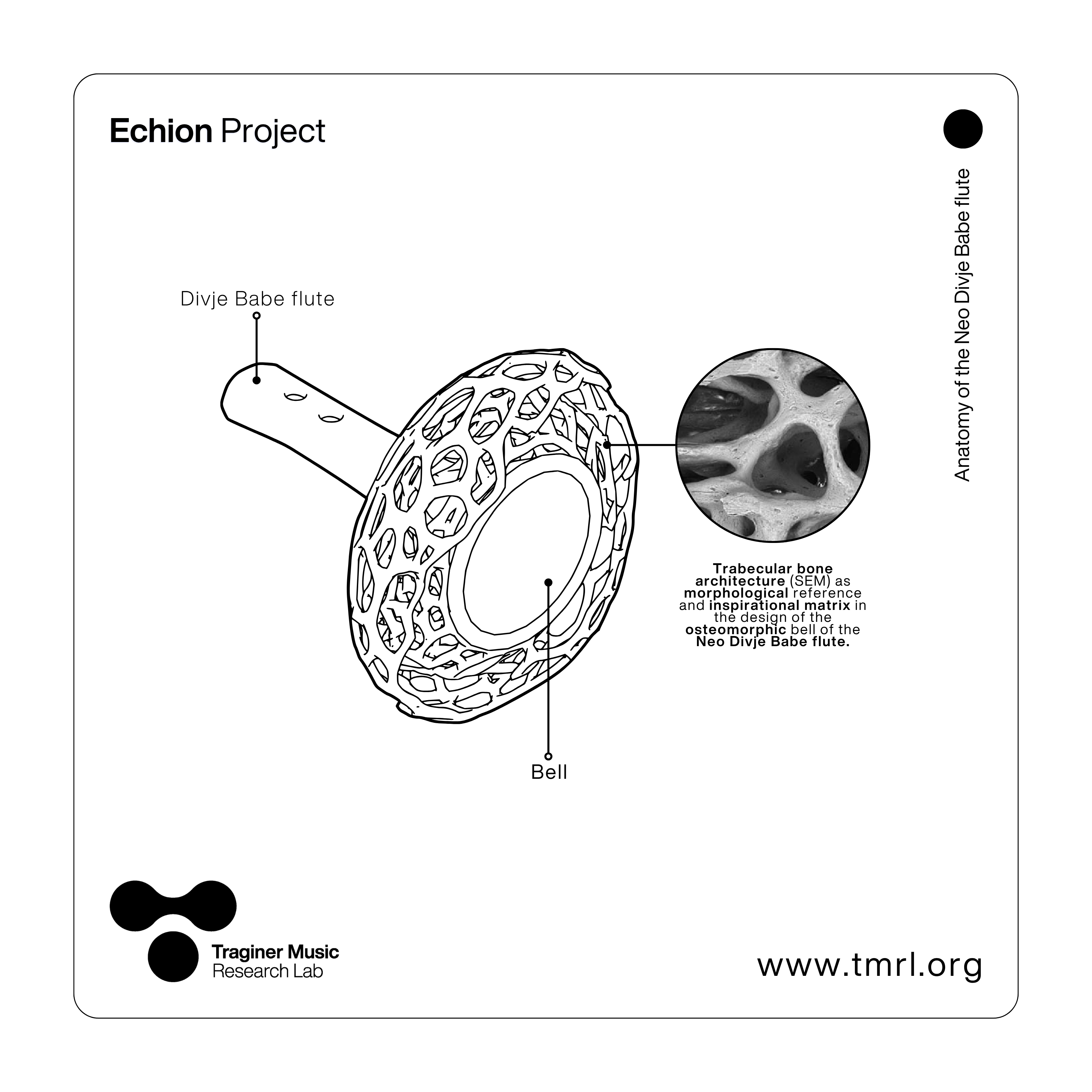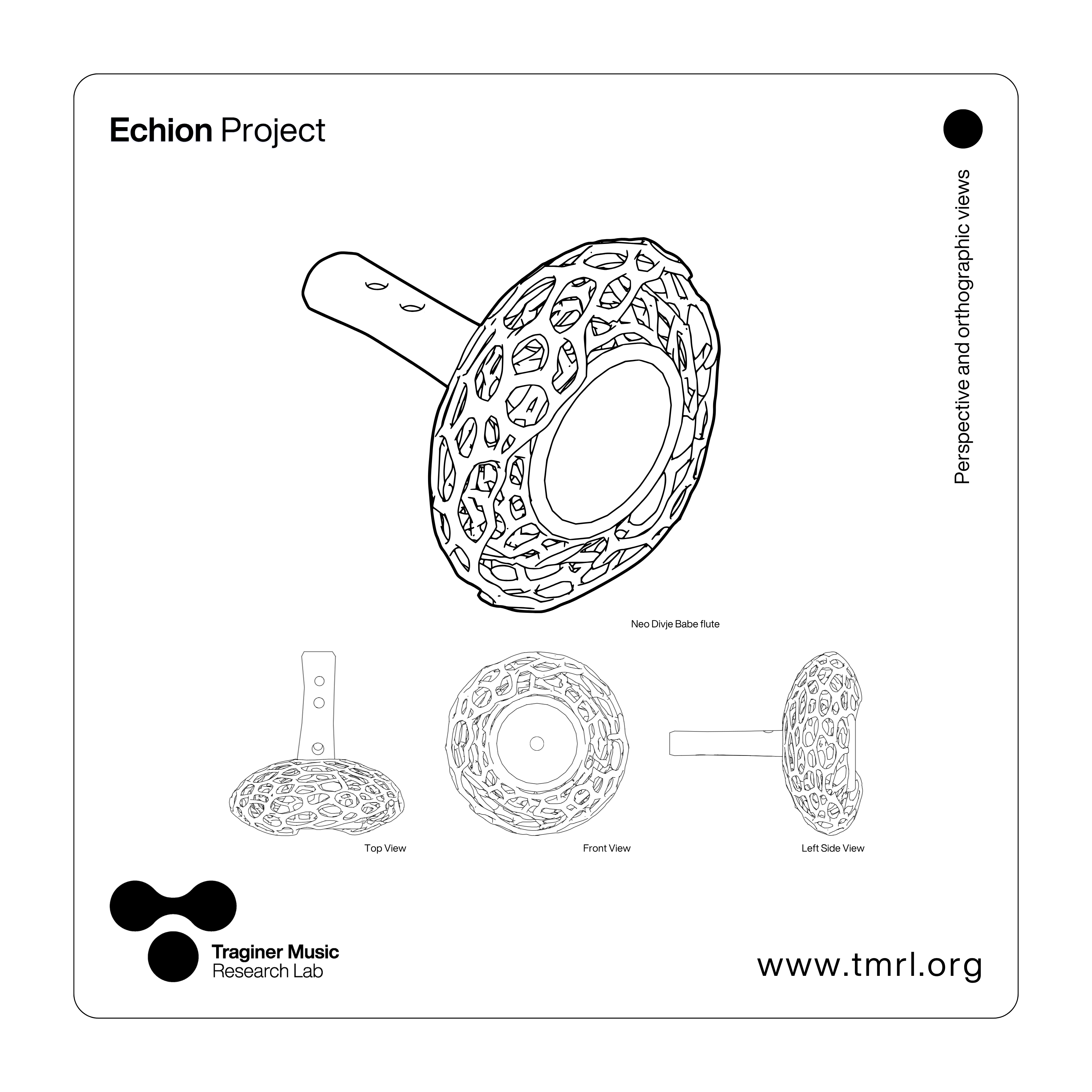
Echion Project
A Speculative Reinterpretation of the Divje Babe Flute
Reimagining an Ancestral Gesture
The Divje Babe flute, currently on display at the National Museum of Slovenia (Ljubljana), inspires the Echion Project, which proposes a speculative reinterpretation of the instrument. Discovered in a karstic cave in northwestern Slovenia and considered one of the oldest known musical instruments, it was carved approximately 50,000 years ago from the femur of a cave bear cub (Ursus spelaeus). This piece embodies one of the earliest human gestures of formalizing sound. However, Echion does not seek to replicate an archaeological object. It presents itself as a vision emerging from alternative futures—an exercise in design from the future, not for the future.
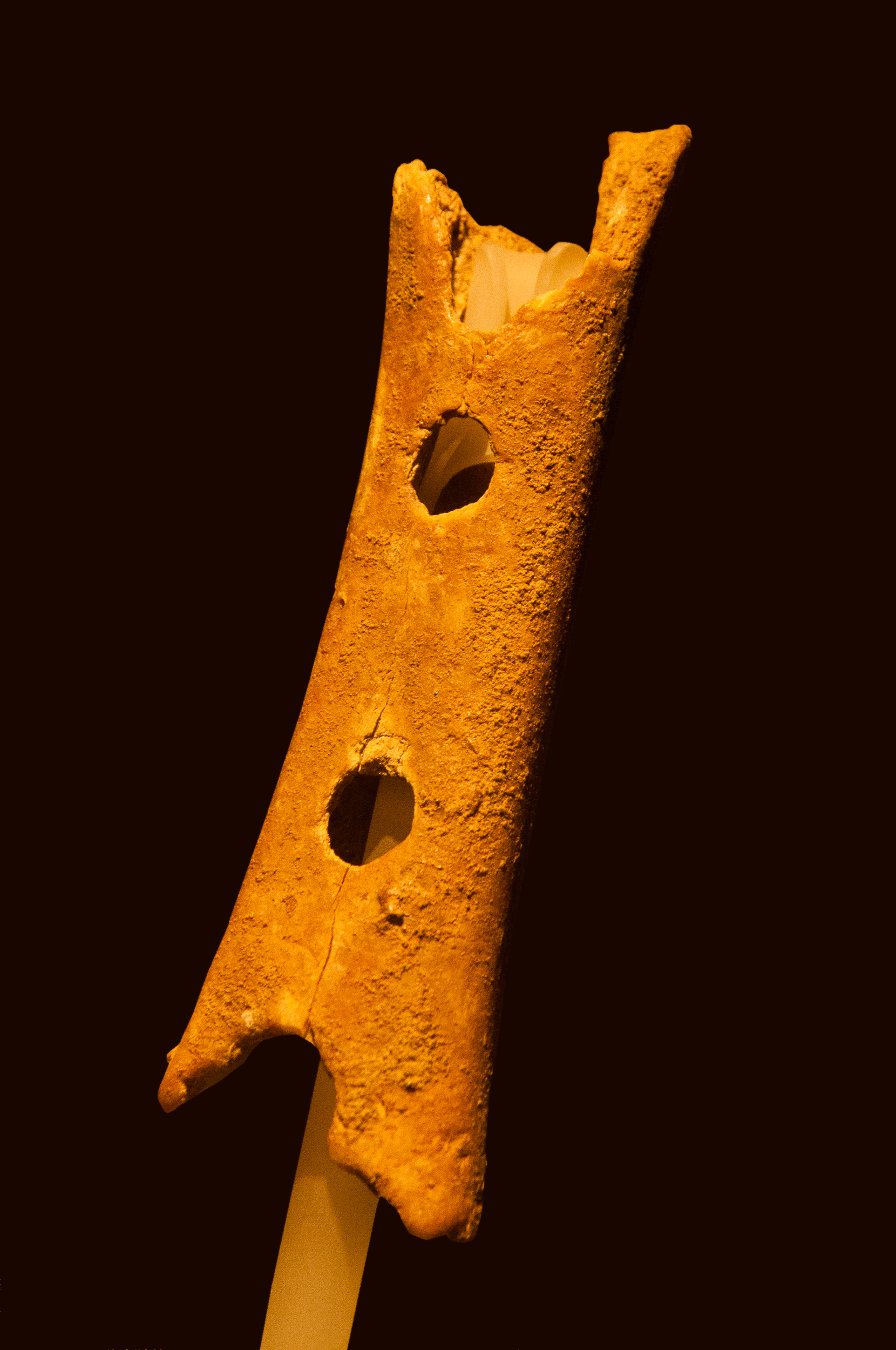
Thilo Parg / Wikimedia Commons. Licensed under CC BY-SA 3.0 Original Divje Babe flute, National Museum of Slovenia
Transversal Materials, Living Patterns
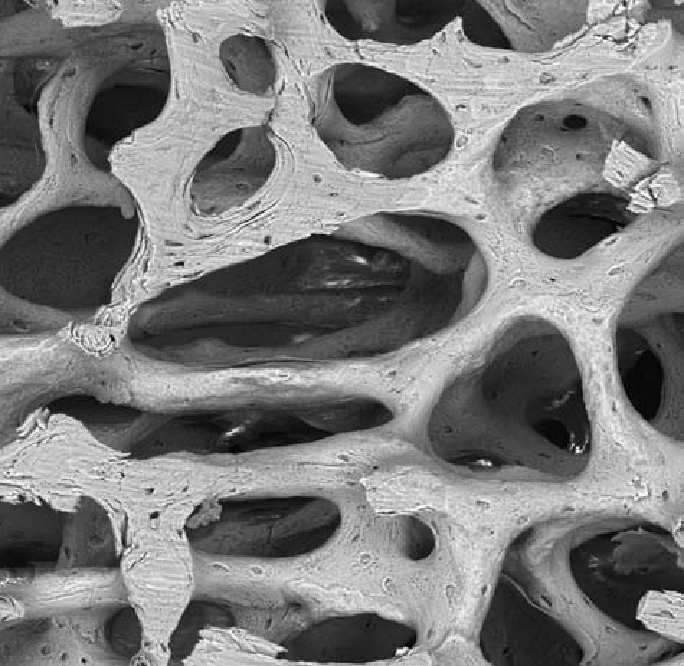
Human trabecular bone microstructure observed via scanning electron microscopy (SEM). Image adapted from: Birkedal et al., “Bone Hierarchical Structure: Heterogeneity and Uniformity”, Advanced Functional Materials (2023). Licensed under CC BY 4.0. Source: Wiley Online Library
We explore how an ancestral musical gesture can be reformulated through new materialities, contemporary fabrication techniques, and formal structures inspired by organic patterns. The redesign incorporates an internal acoustic bell and an external osteomorphic bell, both conceived to amplify and expand the resonant potential of the original tube. The osteomorphic bell draws its morphological inspiration from the trabecular architecture of bone, as observed through scanning electron microscopy (SEM). This reference allows for a transition from biological study to acoustic exploration, thus establishing a bridge between the evolutionary and the speculative.
.png)
Divje Babe flute and Neo Divje Babe flute
Original illustration by Traginer Music Research Lab. Licensed under CC BY-NC-SA 4.0
Speculative Sonorities and Archaeoacoustics
The use of contemporary materials and generative modeling processes is not driven by a desire for technical sophistication, but rather by the search for new relationships between matter, body, environment, and listening. Each component of the instrument raises questions about how these elements affect the sonic experience and the cultural perception of the object.
Following the line of research initiated with the Hypate Project, Echion envisions the possibility of being fabricated using lunar or Martian regolith simulants. This choice establishes both a symbolic and material link between the first human sounds and the materials of the cosmos, suggesting that music—as an expression of the human—can adapt and reemerge in any territory, even in those yet to be inhabited.
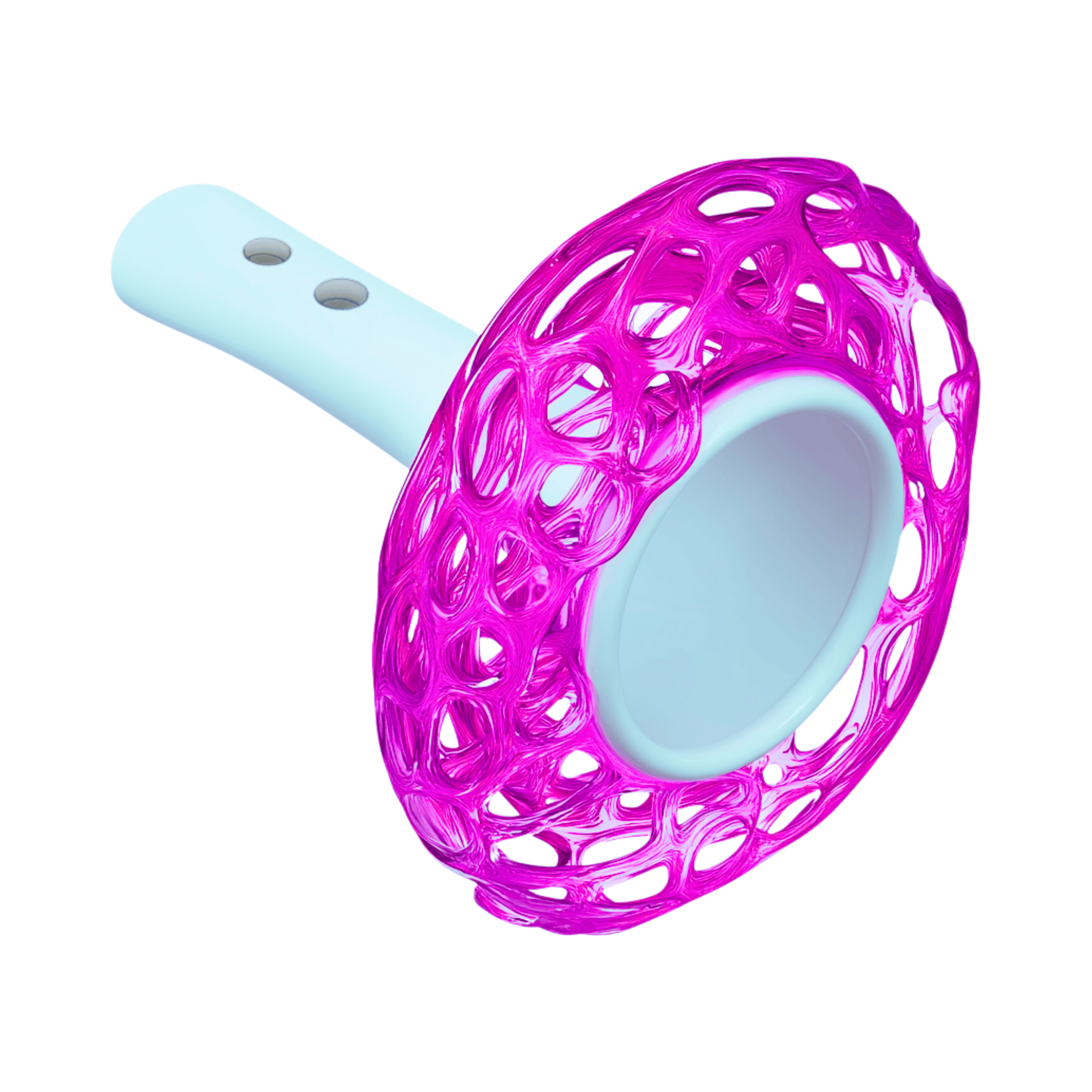
Neo Divje Babe flute
Original image by Traginer Music Research Lab. Licensed under CC BY-NC-SA 4.0
Music as Hypothesis
Echion is not a reconstruction: it is a material and acoustic speculation about what an instrument might once have been—and what it may still become—within the expanded history of humanity.
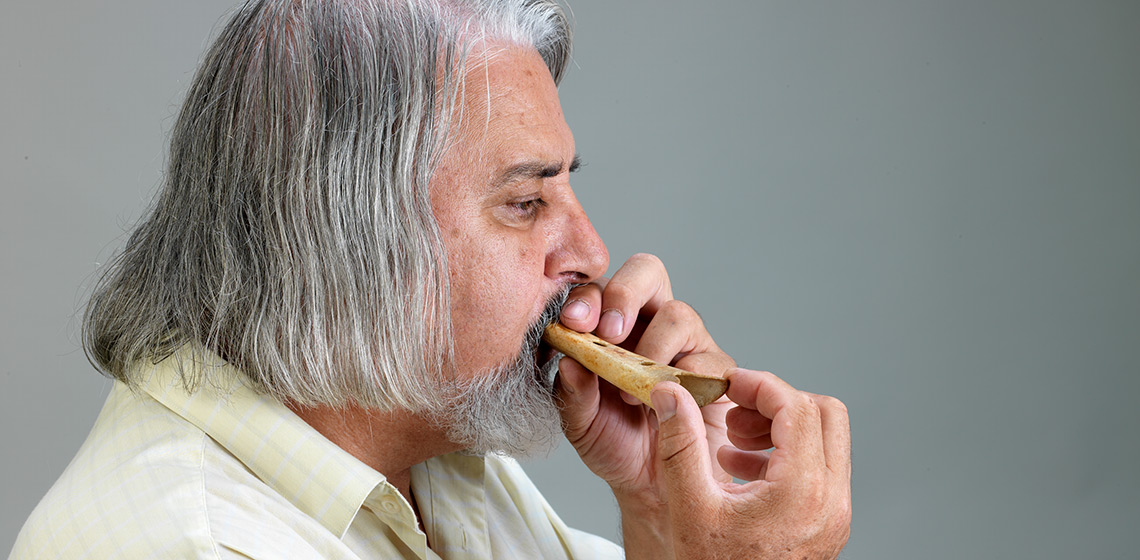
Ivan Turk ©, EXARC Journal 2020/3
Reconstruction of the Divje Babe flute in situ
exarc.net
